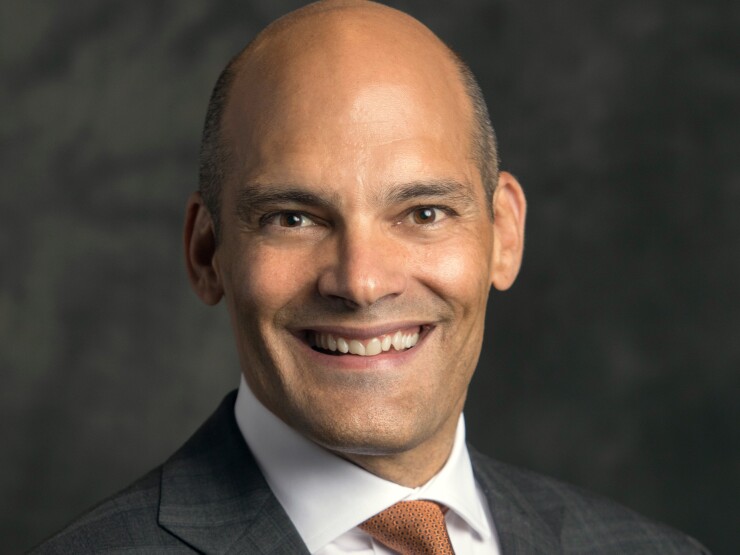American Express has dispatched hundreds of staff to large cities to onboard new stores as it tries to close its gap in merchant coverage with Visa and Mastercard.
It's doing so in an
"We've been a company for 174 years and have gone through major disruptions. We focus on the medium term and aren't reacting to any cycle," said Raymond Joabar, group president at Amex Global Merchant & Networking Services.
While Amex and Discover reached
"Merchants have a greater need than just card acceptance or payment support," Joabar said, adding that merchants want financial products, consulting, marketing, risk and other services.
Amex is focused on more than 50 global cities that it identified based on levels of U.S. travel. Like
More than two dozen of these cities have reached 75% penetration with Amex over the past year, with Joabar adding that the goal is to reach 99% in all of them over the next couple of years. If consumers can reliably use Amex at a variety of merchants, it increases the card network's chance of luring payments business beyond travel and entertainment, Joabar said.
"That resonates with card members who want to see more coverage," Joabar said. "And all merchants want to be able to grow and find new customers. And we have some of the highest spending customers given our model."

Amex is also relying on its balance sheet. In recent quarters, American Express has
"American Express is performing exceptionally well in a turbulent economy," said Brian Riley, co-head of payments for Javelin Strategy & Research, noting that the majority of Amex's revenue comes from the U.S., as opposed to Mastercard and Visa, which rely on the U.S. for less than half of their revenue. "Looking into markets beyond U.S. borders is critical for the firm's long-term growth."
Amex uses its own staff to reach larger merchants, or chains that make up 10% to 15% of the stores in a particular country but make up 75% of the country's overall processing volume. It works with payment facilitators to reach smaller merchants where the ratio is opposite — 75 of the merchants produce 25% of the payment flows.
Payment facilitators work with financial institutions and other payment companies to help merchants support a variety of payment options. Amex works with Square, Stripe, Intuit and a variety of fintechs to provide these services for smaller merchants. It also works with FIS in the U.K.
That also means working with partners in areas where Amex is not an issuer. For example, Amex worked with local banks in the Caribbean to double coverage over the past year; Amex is on path to reach 90% of merchants in a 22-island region by early 2024.
"The fintech partnerships also enable us to 'test and learn' about new uses for generative AI, blockchain and other new technology," Joabar said.
American Express has partnered with
The strategy's recent merchant wins include U.K. shoe repair chain Timpson and B&M retail, also in the U.K. Amex and payments fintech Cardless launched a co-branded card with TAP Air Portugal in December. The card supports mobile boarding and other digital travel technology, and offers incentives to make payments at local merchants in Portugal.
"Establishing a presence takes more than just a keen desire," Riley said. "American Express will need to work local markets, increase its issuing goals, and work the market aggressively to gain merchant acceptance. They will also need to be savvy about local pricing, particularly in areas with regulatory price controls on bank cards, which might put Amex at a disadvantage."






